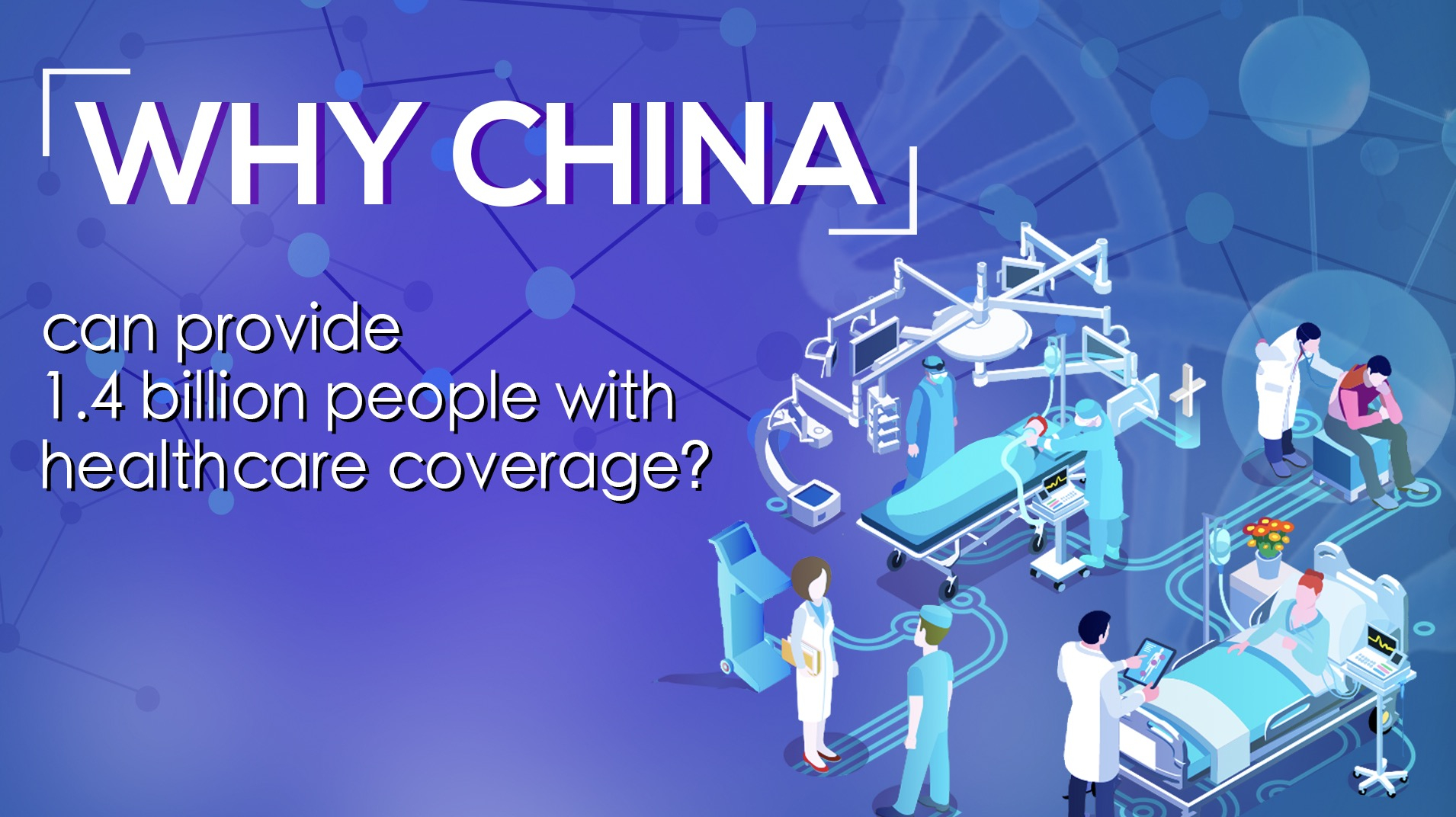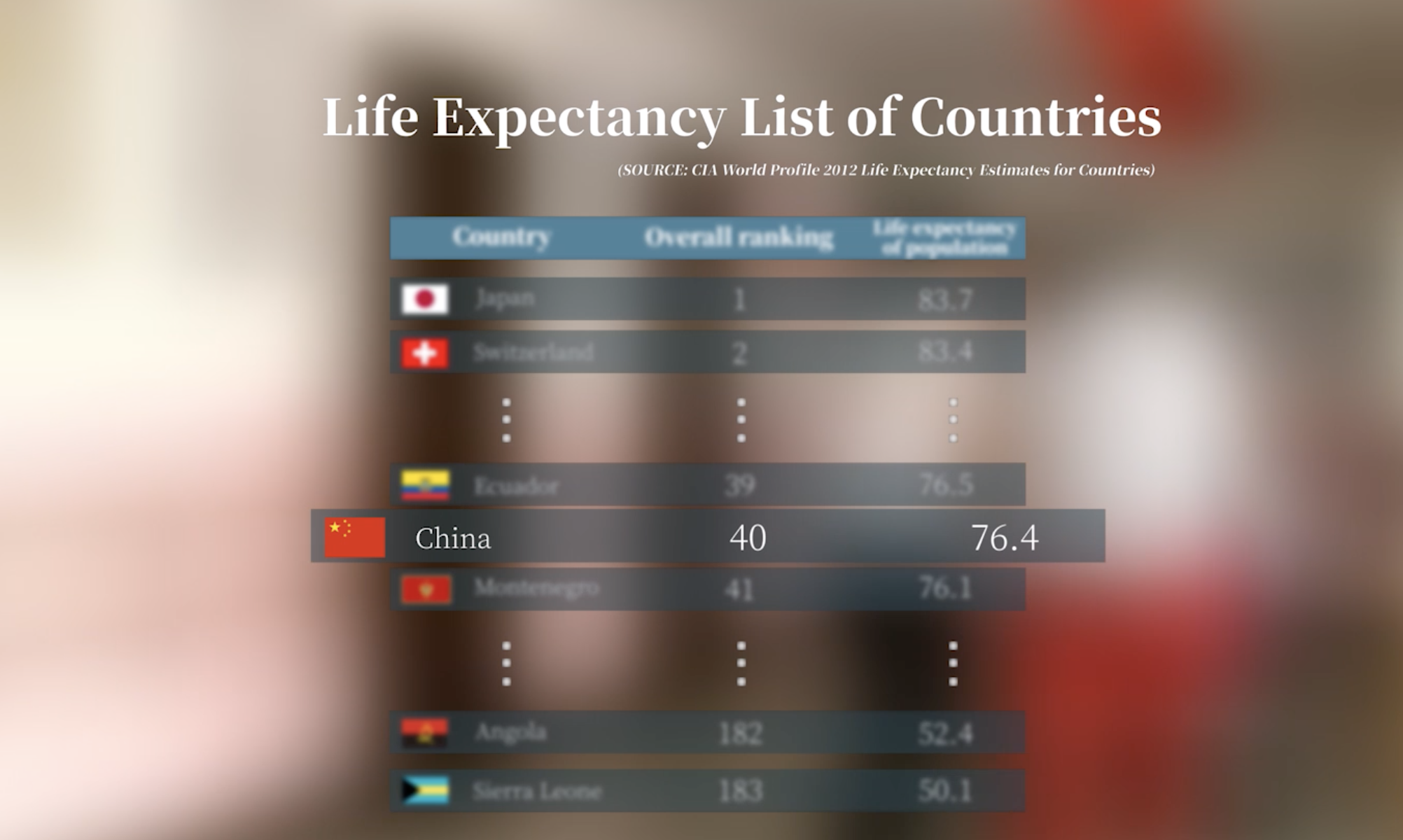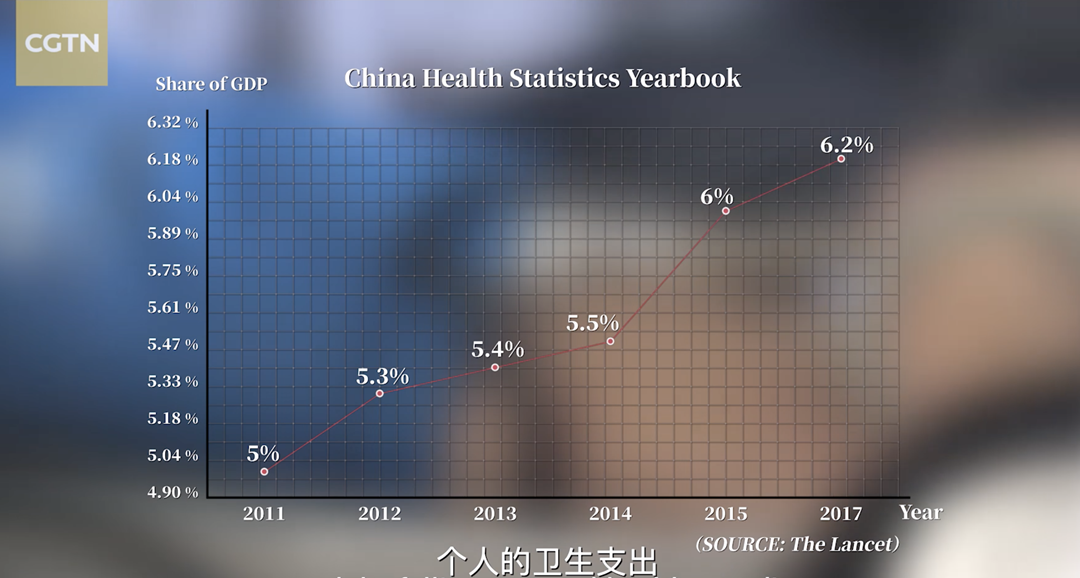

Health care is a very complicated issue that all governments are struggling with. And for China, the world's largest developing country with 1.4 billion citizens, the challenge is even bigger.
But over the past decade, China has achieved universal medical-insurance coverage for its people. So how does the country make it possible?
What has China achieved?
China has rebuilt its health care system, especially for the rural area. Every person is covered by basic health insurance.
In addition to covering the employed urban population, it also takes care of the urban unemployed and rural population, effectively safeguarding the health of the Chinese people.
In 2017, the average life expectancy of the Chinese people reached 76.4, rising to the 40th place globally to become one of the fastest-ascending countries.

CGTN Photo
The Lancet, an internationally renowned medical journal, has ranked China among the top five countries in the world with the greatest medical advancement, which is largely attributed to the country’s medical reform.
Cheaper medicine for major diseases
As part of its medical reform efforts, the country has been taking actions to solve some of the most troublesome problems for its citizens.
For example, certain drugs for major and serious diseases are rather pricey in China, which often drives patients and their families into poverty.
Statistics show that the five-year survival rate of cancer patients in China is about 30 percent, whereas in developed countries in Europe and the United States the rate is about 70 percent to 80 percent. And a key reason behind the disparity is the affordability of cancer drugs.

VCG Photo
From May 1, 2018, most of the imported drugs, particularly anticancer drugs, have become tariff free in China, which reduce the prices of anticancer drugs by up to 20 percent.
On October 10, 2018, the medical insurance began to cover 17 additional anticancer drugs. The newly negotiated drug prices are on average more than 50 percent lower.
And the payment rates for most imported drugs after negotiation are lower than the market prices in surrounding countries or regions.
With these efforts, China is aiming to give its citizens affordable treatments for not only minor complaints but also major diseases.
“Toilet Revolution”
Other than the universal medical insurance, China is also taking other measures key to improve the health conditions of the Chinese people and prevent the occurrence of diseases. The "toilet revolution" is a case in point.
In 1993, the first rural environment-health investigation revealed that only 7.5 percent of the rural areas in China have toilets.
By the end of 2016, the figure had gone up to 80.3 percent. China’s target is to reach 85 percent by 2020.

CGTN Photo
The introduction of the toilet revolution harmlessly processes excrement, which effectively kills bacteria and parasites in the excrement, and reduces the breeding of flies and mosquitoes.
Consequently, epidemic-prone diseases are prevented and controlled right from the start, and the overall medical expenses reduced.
More efforts needed
2019 marks the 10th anniversary of a new round of intensified health and medical care reform. And despite all the progress made during the past decade, experts say that the Chinese health care system still has a lot of problems to fix.
Despite the rising health spending as a share of GDP in China and the falling personal health spending in the total health expenditure each year, China still lags behind.
Compared to the U.S. in 2017, China’s total health expenditure amounted to 6.2 percent of its GDP and about 560 U.S. dollars per capita, whereas that of the U.S. amounted to 16.2 percent of its GDP and about 9,500 U.S. dollars per capita.

CGTN Photo
China’s health spending per capita equates to only about one seventeenth that of the U.S.
Globally, in 2014, the average world health spending as a share of GDP already reached 9.9 percent, whereas China has yet to reach this figure even today.
The Chinese government is still working to provide higher level of public medical insurance that will allow the 1.4 billion people enjoy equal medical resources of high quality.
More than that, China will ensure the delivery of comprehensive lifecycle health services for its people, which is known as the “Healthy China Strategy.”

Copyright © 2018 CGTN. Beijing ICP prepared NO.16065310-3
Copyright © 2018 CGTN. Beijing ICP prepared NO.16065310-3